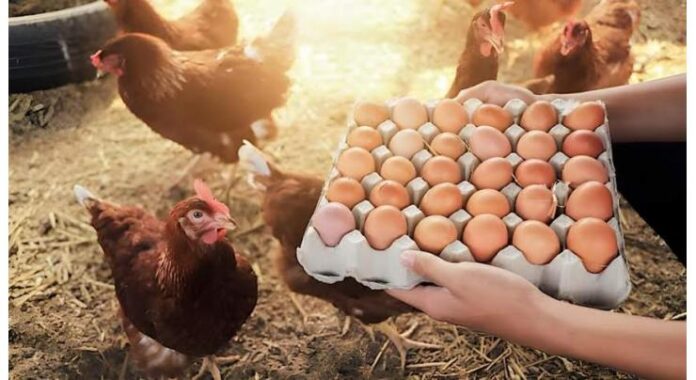- Advertisement -
Dr. Saeed Ahmad Ali
LAHORE, Apr 23 (APP):Recent developments in chicken farming worldwide include advancements in automation, precision technologies, and sustainable practices. These advancements focus on improving efficiency, optimizing resource use, and enhancing animal welfare while addressing sustainability concerns and productivity in both terms of flesh and production of eggs.
Pakistani scientists have developed a new breed of chicken capable of laying more than 200 eggs annually, marking a major breakthrough for rural poultry farming. The new breed, named Uni-Gold, was developed by researchers at the University of Agriculture Faisalabad (UAF).
Scientists from the Department of Animal Husbandry of the Faisalabad University of Agriculture have developed a breed of chicken called Uni-Gold that can lay 200 eggs per year and has a better ability to cope with climate change.
Scientists say, “We have developed a breed called Uni Gold here, which has such a quality that the ones, that are eggs-lay ,more than 200 eggs in a year and the common indigenous ones lay 70 to 80 eggs a year and have a low feeder load, so they tolerate heat stress.”
Scientists from the University of Agriculture say that after 65 years in the history of Pakistan, success has been achieved in developing a breed of chicken that is more useful for rural poultry farming.
Now both breeds are such that wherever you take or raise them, eggs will also grow and the need for meat will also be fulfilled.
After the preparation of this chicken breed, steps are being taken to introduce it to farmers so that rural poultry farming can increase.
According to a Britannica research study commercial poultry feeding is a highly perfected science that ensures a maximum intake of energy for growth and fat production. High-quality and well-balanced protein sources produce a maximum amount of muscle, organ, skin, and feather growth. The essential minerals produce bones and eggs, with about 3 to 4 percent of the live bird being composed of minerals and 10 percent of the egg. Calcium, phosphorus, sodium, chlorine, potassium, sulfur, manganese, iron, copper, cobalt, magnesium, and zinc are all required. Vitamins A, C, D, E, and K and all of the B vitamins are also required. Meanwhile antibiotics are widely used to stimulate appetite, control harmful bacteria, and prevent disease. For chickens, modern rations produce about 0.5 kg (1 pound) of broiler on about 0.9 kg (2 pounds) of feed and a dozen eggs from 2 kg (4.5 pounds) of feed.
Scientists at the Animal Husbandry told APP that the Agricultural University of Faisalabad is a concoction of four disciplines viz., Animal Breeding and Genetics, Livestock Management, Animal Nutrition and Poultry Science to constitute the Institute of Animal and Dairy Sciences.
Offering latest research programmes, more than 500 students are currently enrolled. Furthermore, 8 postgraduate degree programs including four masters and four PhD programs corresponding to the four mentioned disciplines are also offered. In these postgraduate programs more than 125 students including 12 PhD scholars are currently enrolled. For these students, the faculty offers 39 courses at undergraduate and 62 courses at postgraduate level along with several short courses.
To a query they said that the Faculty has the mandate to genetically improve livestock and poultry species and related activities to enhance productivity of food and fiber of animal origin and thus to bring more prosperity to the farmers and in turn to the nation. It is the pioneer institution that imparts Animal Husbandry education.
In the faculty a sub-center of “National Center of Livestock Breeding, Genetics and Genomics” has also been established for implementation of genomics to improve livestock and for hand on training of the students and professionals/farmers for different molecular and computational skills required in various domains of animal production. The faculty members have published more thank 60 books for the benefit of students, extension workers and the farming community. A fare number of research projects have been completed by the faculty members so far and their salient outcomes have been published in reputed impact factor journals, they informed.

